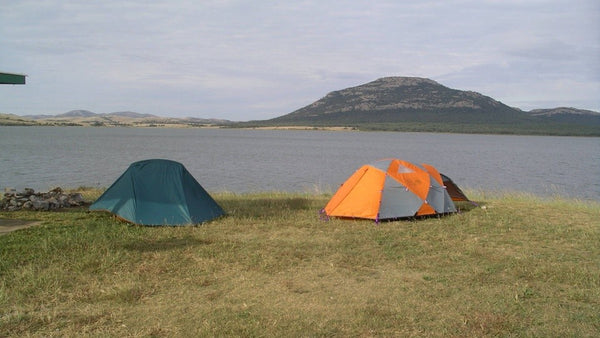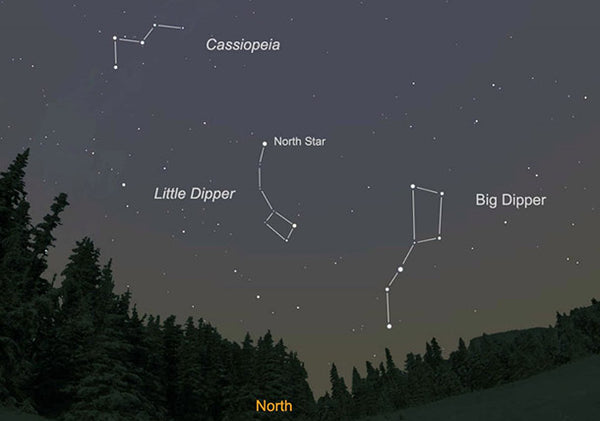Plant Identification
Why should scouts (and outdoor adventurers of all ages) learn to identify plants? Easy – because knowledge of the local vegetation can prevent you from getting itchy rashes, help you out in survival scenarios, and make you feel more comfortable and at home while exploring natural environments. Simply put, plant-knowledge is some of the most practical outdoor knowledge there is, and the ability to identify plants is the first step to understanding how they can help (or hurt) you. Though the specific plants you’ll encounter on your adventures will depend on your geographic region, the following list covers some of the most important species to be aware of.
Poisonous Plants
Learn to identify these ones so you can avoid them at all costs – a variety of plants are poisonous when ingested, but some of those will be covered below in the section on edible flora. The following list is of plants that will irritate your skin if you touch them.
Poison Ivy
Region: Most prevalent in Eastern US
How to ID: Remember – “leaves in three, let it be!” Meaning, more specifically: if it has three leaves at the end of every stem sprouting out from a branch, it’s poisonous. This rule applies for Poison Oak as well.
Info: This vine secretes an oil called urushiol (the same which is found on Poison Oak and Sumac) through its leaves, roots, and stem. This oil causes an itchy rash that appears no later than 48 hours after contact with the plant and usually lasts around 2-3 weeks. If you know you’ve brushed up against a poison ivy plant, rinsing the affected area with water can help to wash off the oil and prevent skin irritation.
Poison Oak
Region: Most prevalent in the Western US/Rocky Mountains
How to ID: Leaves in three, let it be! See above.
Info: Most often grows as a shrub, but can also appear as a vine. Leaves of Poison Oak are smoother and more serrated than the round, oak-like leaves of Poison Oak, but otherwise, the two plants appear very similar and have the same irritating effects.
Poison Sumac
Region: Most prevalent in the Southeastern US
How to ID: Poison Sumac grows as a shrub or small tree with leaves that grow opposite each other on a red stem and have completely smooth (non-serrated) edges.
Info: Poison Sumac is relatively rare compared to Poison Ivy and Poison Oak. It is found only in wet areas, primarily in the southeastern and northeastern states.
Stinging Nettle
Region: Across North America
How to ID: An herb that grows in tight clusters; leaves shaped like elongated hearts with small, sharp-looking hairs growing all around leaves and stem.
Info: Brushing against the hairs of Stinging Nettle plants will cause an itchy rash due to a combination of acids and chemicals carried on their tips. Unlike Poison Ivy, Oak, and Sumac (which should never be ingested) cooking Stinging Nettle neutralizes its poisonous properties so that it can be eaten safely.
Edible Plants
In addition to cooked Nettle, there are a wide variety of edible plants to be foraged from all over the country. Here are a few of the most easily recognizable:
Cattail
Region: Across North America
How to ID: Cattail are easily recognizable reeds that grow in marshlands or along the edge of bodies of water. They are identifiable by their long, singular stems and fluffy sausage-like flowers which grow vertically at the top of the stem.
Info: Cattail roots are edible and nutritious, and can also be used for bedding and insulation in shelters. Because they can be found even in the winter, they are considered one of the most valuable survival plants
Wild Onion
Region: All environments across North America
How to ID: Onions grow as bulbs underneath grassy shoots, usually appearing in large patches. They can also be identified by their distinctive smell – if it doesn’t smell like an onion, it probably isn’t one.
Info: A poisonous lily known as the Death Camas can sometimes be confused with wild onion. It looks very similar, but its bulbs do not smell like onion.
Dandelion
Region: Scattered across North America
How to ID: Dandelions are yellow flowers that grow in scattered clusters and sprout up from a ring of long leaves with deeply serrated edges.
Info: The entire dandelion plant (leaf, root, stem, and flower) is edible and highly nutritious.
Other easily identifiable edible plants include: cultivated berries (like blackberries and strawberries), acorns, and hickory nuts
NOTE: Before ingesting any plant you find in nature, you must be positive that you have identified the plant correctly. Never eat anything if you aren’t absolutely sure that you know what it is. Plants that are poisonous when ingested include mistletoe, holly, ivy berries, and hemlock. Hemlock is particularly dangerous because its leaves resemble parsley and it is extremely poisonous. Avoid eating any plants which have parsley-like leaves, smell like almonds, or have an extremely bitter taste.
Other Useful Plants
Birch
Region: Across US
How to ID: Different varieties of Birch trees are found all across the United States and Canada, but all have a light-colored, papery bark with dark horizontal splotches up and down the trunk.
Info: Strips of Birchbark make great kindling, as they burn slowly and easily and can usually be gathered in abundance.
Pine
Region: Across US
How to ID: Easily identified by needle-like leaves and conical seeds. If you see pinecones on the ground, there are pine trees dropping them.
Info: Pine needles can be chewed on and spit out for nutrients, and (along with pinecones) are great for starting fires. Pine resin (the sap-like substance which you might see leaking out of a damaged part of a tree) can be used to seal minor wounds or as an adhesive in shelters.
Sagebrush
Region: Western US
How to ID: Sagebrush is a shrub with many small, irregularly shaped, and slightly waxy leaves. When in bloom, this plant has many tiny flowers on each of its branches. Most easily identifiable by its extremely distinctive, somewhat sweet and woody aroma.
Info: Sagebrush can be effective as a bug repellent when rubbed on the skin or burned in a fire.
Do you have any plant tips let us know in the comments.
Leave a comment
Comments will be approved before showing up.
Also in News & Skills




Richard White II
Author